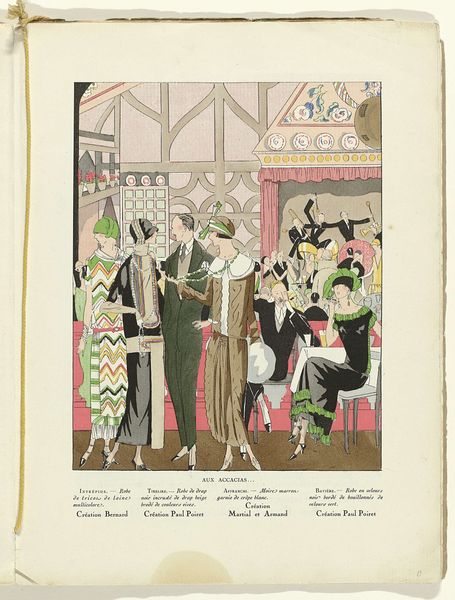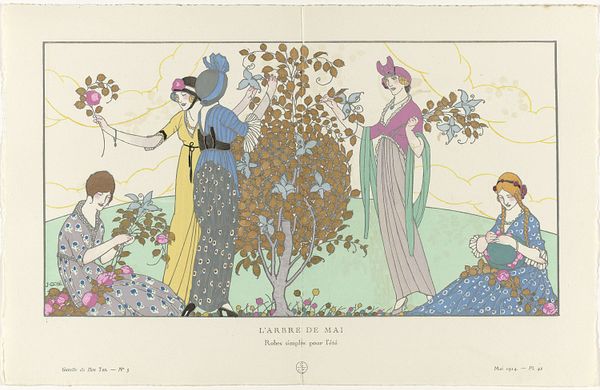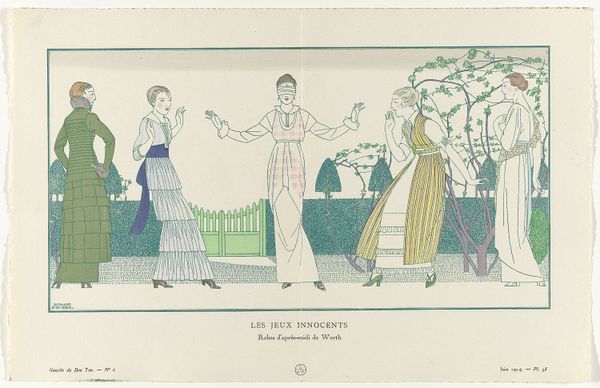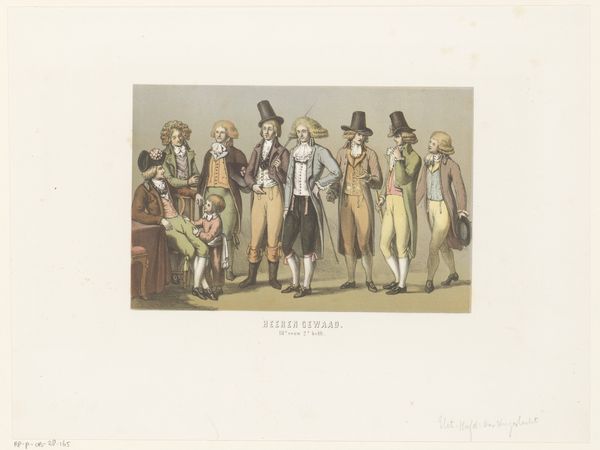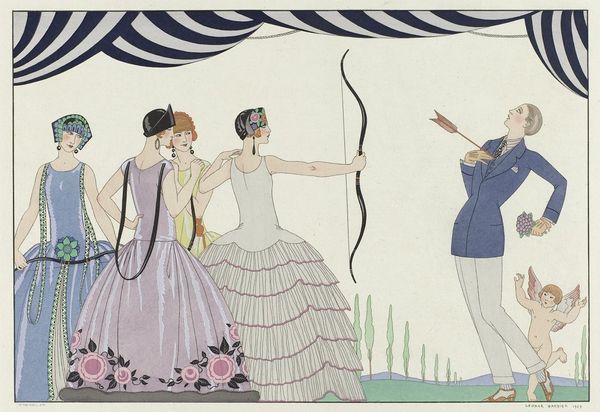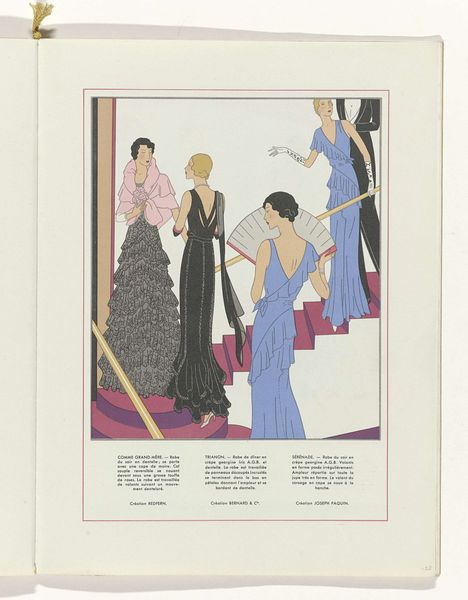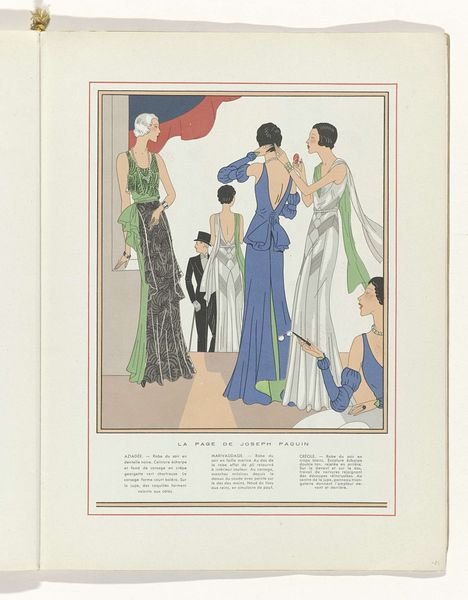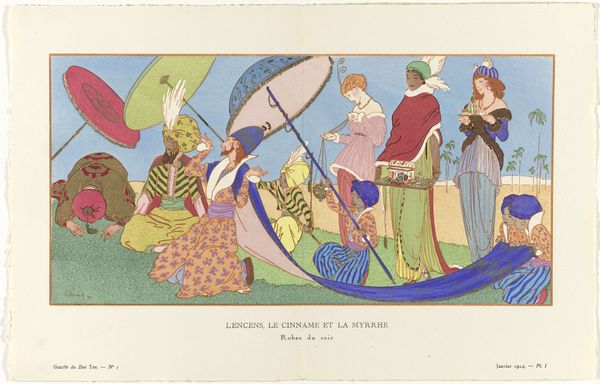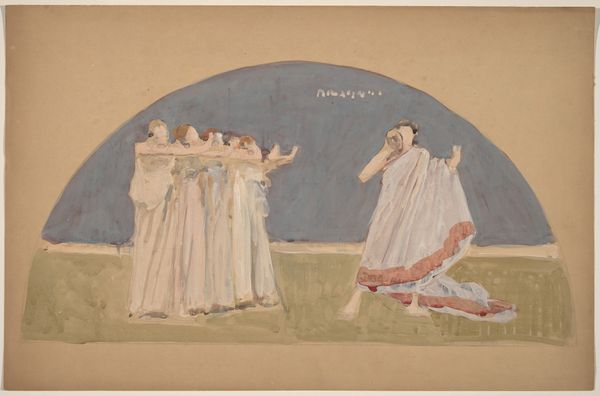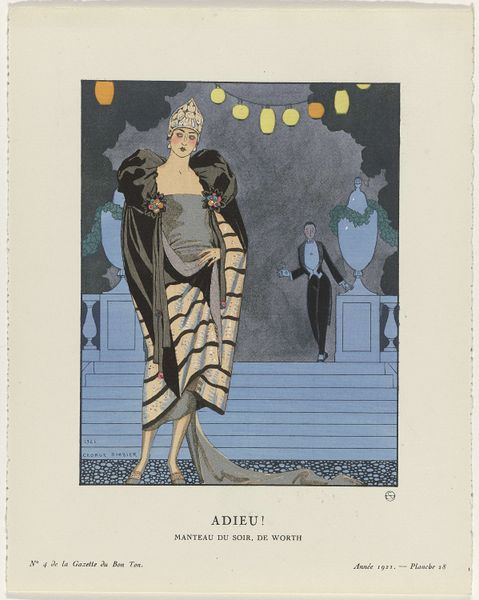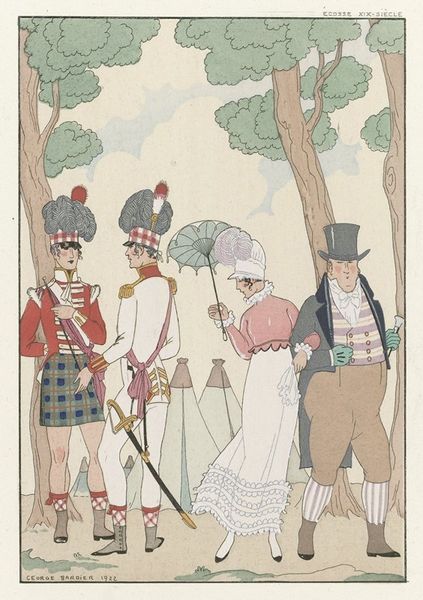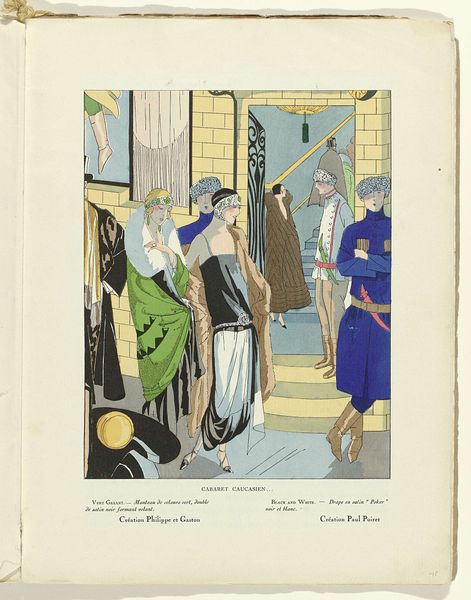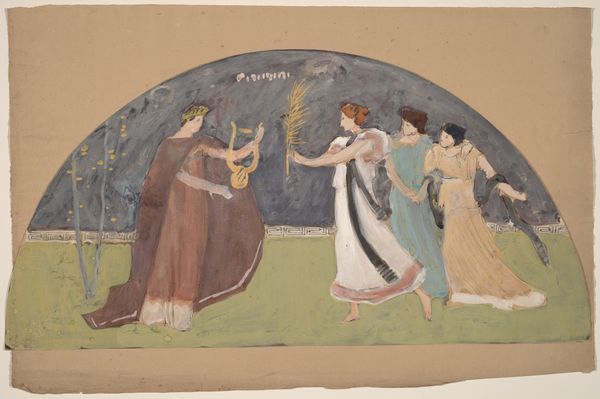
Gazette du Bon Ton, 1914 - No. 5, Pl. 43: "Aphrodite" / Dans les jardins de la Déesse 1914
0:00
0:00
Dimensions: height 243 mm, width 380 mm
Copyright: Rijks Museum: Open Domain
Editor: So this is “Aphrodite” by Charles Martin, a print from 1914, published in the Gazette du Bon Ton. There's a fascinating formality and flatness to it, almost like figures staged on a frieze, but then that strange little scene at the bottom adds a surreal element. What do you see in this piece? Curator: I see a fascinating engagement with ritual and representation. Consider the moment this was created, 1914: on the cusp of immense societal upheaval with the start of World War One. How might we interpret this staged tableau as a pre-war yearning for classical ideals of beauty and order, even while those ideals were under immense strain? Editor: That's interesting. The poses of the figures feel deliberate, almost performative. Is that intentional? Curator: Absolutely. And what about the title itself, “Aphrodite, In the Gardens of the Goddess”? Who gets to decide what the role of a goddess in this era means? And why this deliberate aesthetic, so referential of the past? The line, the colors... even the seeming primitivism we can link back to colonial fantasies, what roles are these women playing and who benefits from their staged performance? Editor: So, you’re saying the artwork maybe uses these references to ancient art and culture, while maybe subverting them at the same time? Curator: Exactly! Consider this alongside emerging discourses around female identity and autonomy at the time. Is Martin celebrating or critiquing these stylized depictions of women, these historical reenactments, in the face of changing social roles? Where do you think he might sit on this issue? Editor: That definitely gives me a lot to think about; seeing the women both as actors and products of the cultural expectations around them. Curator: It is the space of dissonance where the most critical work lies; in interrogating these performances we can unearth our hidden biases and blind spots and expand our visual lexicon and experience in the process.
Comments
No comments
Be the first to comment and join the conversation on the ultimate creative platform.
